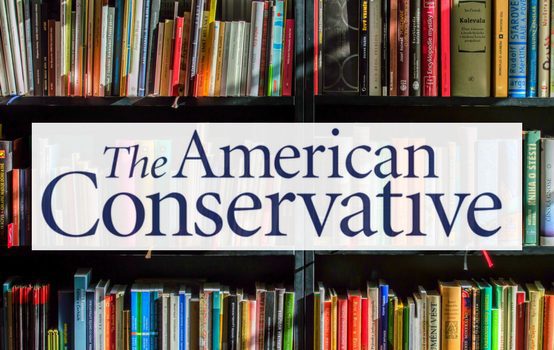TAC Bookshelf: Why Estonia is Different

Daniel Larison, senior editor: There are few histories of Estonia in English, and there are even fewer that include a survey of the post-Soviet independence period. That gap has now been filled by Neil Taylor’s new account of the last century of Estonian history, Estonia: A Modern History. It is focused on the post-World War I period, so the treatment of the preceding centuries of domination by Russia, Sweden, and Denmark is necessarily brief and limited. Taylor is also the author of a travel guide to the country, and his historical account is informed by his travels and his interest in Estonia’s cultural inheritance.
Much of Estonia’s modern history has been, like the history of Europe as a whole, defined by the major conflicts of the last century. Though Estonia was mostly untouched by the fighting of World War I, the war created the conditions for its first successful bid for independence during the Russian Revolution. Estonia’s short time as a republic (vabariik, literally a “free state”) saw tremendous literary and journalistic output and a pluralistic political scene. But like many other nations during this period, it moved towards a more authoritarian political system under Konstantin Päts as the 1930s drew to a close in what Estonian historians call the “era of silence” (vaikiv ajastu). A victim of the Molotov-Ribbentrop Pact, Estonia was swallowed up by the USSR in 1940 and tens of thousands were deported or killed. These deportations stand out as one of the most traumatic and destructive events in Estonian history. The German invasion provided an occasion for Estonia to reassert its independence, but by 1944, it would be part of the USSR again and would not be free of it until just before the Soviet Union collapsed.
Estonia is probably one of the least known European countries in the U.S., as shown by the tendency of histories to lump it in with the other Baltic states to the south, with which Estonia has relatively little in common. In both language and culture, Estonia has much more in common with Finland across the sea. Its ties with Finland served as an important point of contact with the outside world during the Soviet period, and Finnish support proved to be extremely important in aiding Estonia before and after its restored independence in 1991. It was Finnish television that exposed Estonia to ideas and popular culture from abroad, and Finnish political and diplomatic support that helped pave the way for Estonia’s revived statehood. Taylor suggests that Finnish support provided Estonia with a “benevolent uncle” that the neighboring Baltic states lacked, and says this “probably explains why Estonia was able to Westernize more quickly.”
Scott Beauchamp, contributor: Cultural critic and political essayist (among other things) George Scialabba is one of those figures respected, if not outright loved, by writers scattered buckshot across whatever political matrix you choose to plot out their inclinations. Read his collection of essays and reviews, What Are Intellectuals Good For?, and one fairly quickly discovers why: it’s a compelling combination of moral clarity, intellectual curiosity, and psychological humility. Scialabba never lets abstract ideas run too far ahead of his principles, and remains, even in the throes of impassioned diatribes, a mensch.
What Are Intellectuals Good For? consists primarily of essays and reviews about (mostly radical in one way or another) 20th-century American writers and polemicists, whose ambitions seem, in retrospect, tragically fated to fall victim to that particularly American form of cultural amnesia: Dwight MacDonald, Randolph Bourne, Irving Howe, Lionel Trilling, Walter Karp, etc. Some, like Lionel Trilling, were victims of their own success, the complexity and challenging nuance of their ideas buried in a conspiracy of genial approval. Others, such as Walter Karp, were simply lost in the cacophony of post-internet discourse. Ask your twenty-something nephew who Karp is. Their guess might make you LOL.
Scialabba’s collection is nothing if not fully lucid to the gloomy vagaries of history with a capital H. But whatever sense of loss attends his writing, there’s just as much hope in the belief that old dreams can be made new again, the discarded bric-a-brac of cultural (and he would emphasize political) material returned to life in the hearts and minds of individual people. Responding to Irving Howe’s question of how socialism can be redeemed after the terrors of Stalin and Mao, Scialabba writes:
The only way to answer Howe’s question is to gather up fragments from the tradition – cries of protest and invocations of solidarity, heroic lives and utopian fantasies, analytic strands and problematic patches – and fuse them imaginatively. The resulting unity will be only temporary; the ideal will need to be reimagined in every generation. But that is how traditions live.
Gathering up fragments of the past and imaginatively fusing them together within the present is how Scialabba lives, too. You might disagree with him on certain political points, but you always learn from his eloquence and, especially, his decency.
Comments